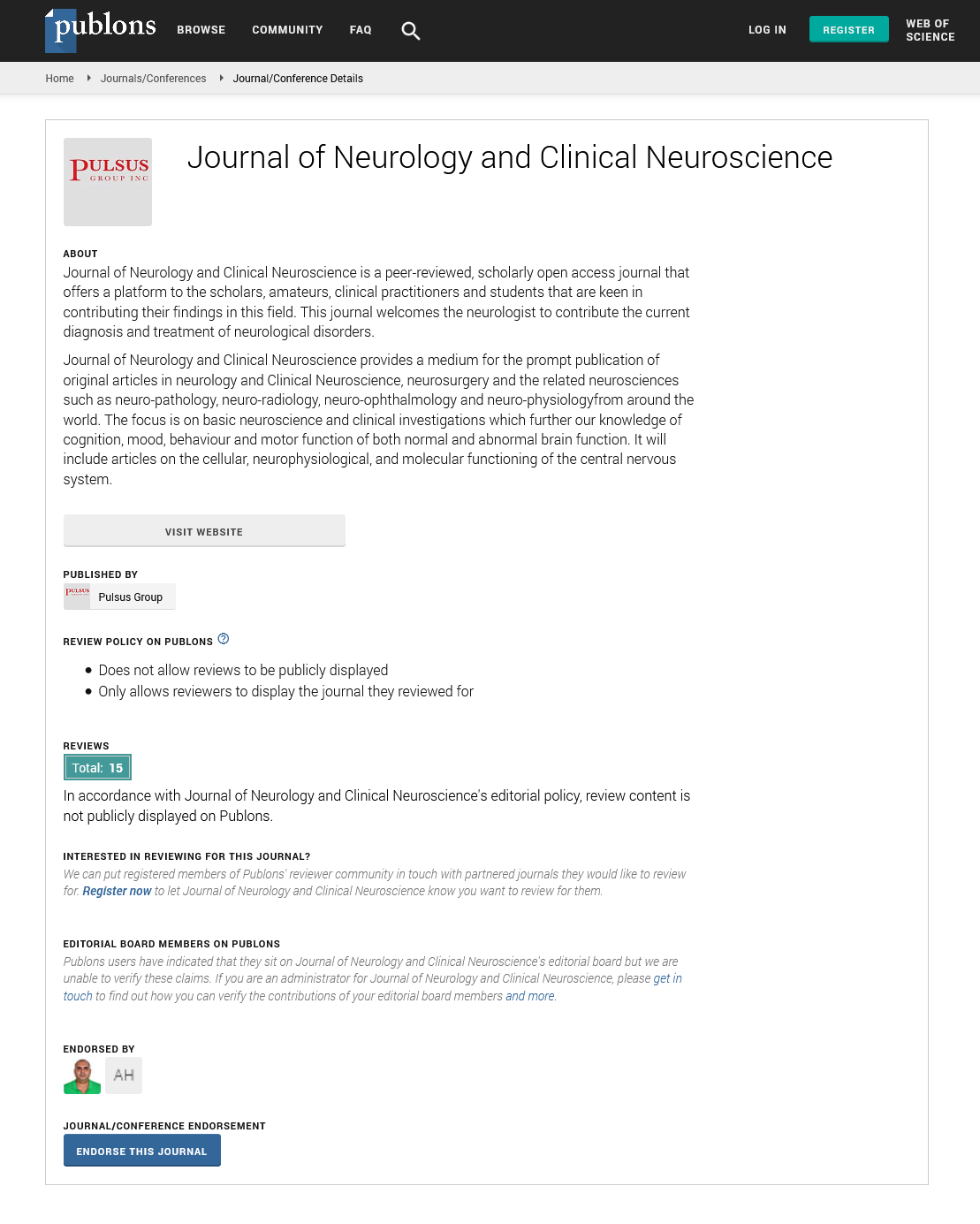Sign up for email alert when new content gets added: Sign up
Frequency and outcomes of unplanned reoperation in neurosurgery
Joint Event on 6th Annual Meeting on Neurosurgery and Neurological Surgeons & 9th Global Summit on Neuroscience and Neuroimmunology
May 22-23, 2019 London, UK
Noor Malik
Aga Khan University Hospital, Pakistan
ScientificTracks Abstracts: J Neurol Clin Neurosci
Abstract :
Introduction: Morbidity and mortality rates are used to evaluate the quality of care delivered by surgical services. However, recently unplanned reoperation rate has been proposed as a quality indicator in surgery. Although, little is known about complications and outcomes of unplanned reoperations in Neurosurgery and it has not been studied extensively. It does not only increase the financial cost of treatment but also bring dissatisfaction to patients and families.
Material and Methods: This retrospective cohort study was conducted at the Aga Khan University Hospital, Section of Neurosurgery. All patients, from January 2010 to December 2017, who underwent unplanned reoperation within 30 days after craniotomy were included in the study. Patients with missing data and patients who underwent first surgery outside Aga Khan University Hospital were excluded from the study. Data was collected on a structured proforma. Medical records and Patient Care Inquiry were used for data collection. Data was analysed using SPSS (Statistical Package for the Social Sciences) IBM version 22. Continuous variables with normal and non-normal distributions were represented as mean and median. Categorical data was represented as percentage and proportions. Chi square test was used to compare the categorical data.
Results: The incidence of early unplanned reoperation was 3.5% (occurring after 175 of 4925 procedures). Median age of patient was 36 (IQR 33) years. Majority of patients were male (3:1). Hypertension was seen in more than half of patients with hemorrhage (p= 0.014). 80% patients with thrombocytopenia had hemorrhage after first surgery. More than half of the patients who underwent early unplanned reoperation initially had surgery for tumor resection (48.2%) and hemorrhage (16.8%). Hemorrhage (40%) was the most common indication for early unplanned reoperation, followed by hydrocephalus and cerebral edema. EDH being most common (10.2%), followed by postoperative elevated intracranial pressure (19%) and cerebral edema (18%). The average time interval (± SD) between first surgery and reoperation was 7.4 ± 8.5 days. The average length of stay following reoperation was 12 (IQR 15) days. Mortality rate was 15% and majority of deaths occurred when reoperation was done within first week of index surgery.
Conclusions: Reoperation rate can be implemented as an important function of quality indicator. It has higher mortality as compared to first surgery but long-term outcomes are comparable
Biography :
Noor Malik has completed MBBS with honors in September 2004 from Pakistan. She did her internship from Aga Khan University Hospital in 2005. After internship, worked as a resident medical officer in private medical Centre from 2006 to 2010. She has been certified by Education Commission for foreign medical graduates, USA. Has started neurosurgical residency program in 2014, from Aga Khan University Hospital. Currently she is in her last year of training.
E-mail: noormalik.abdullah@gmail.com





